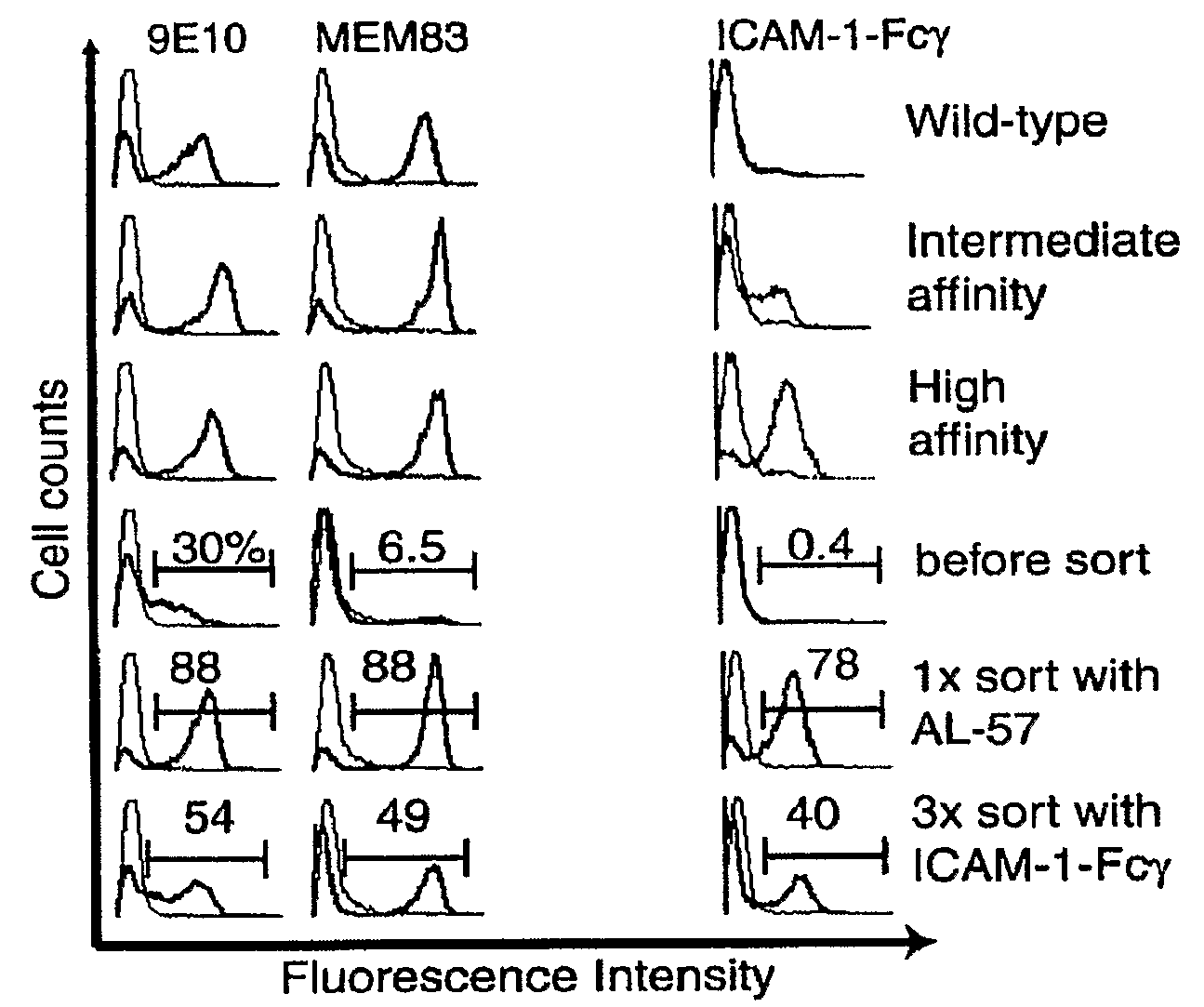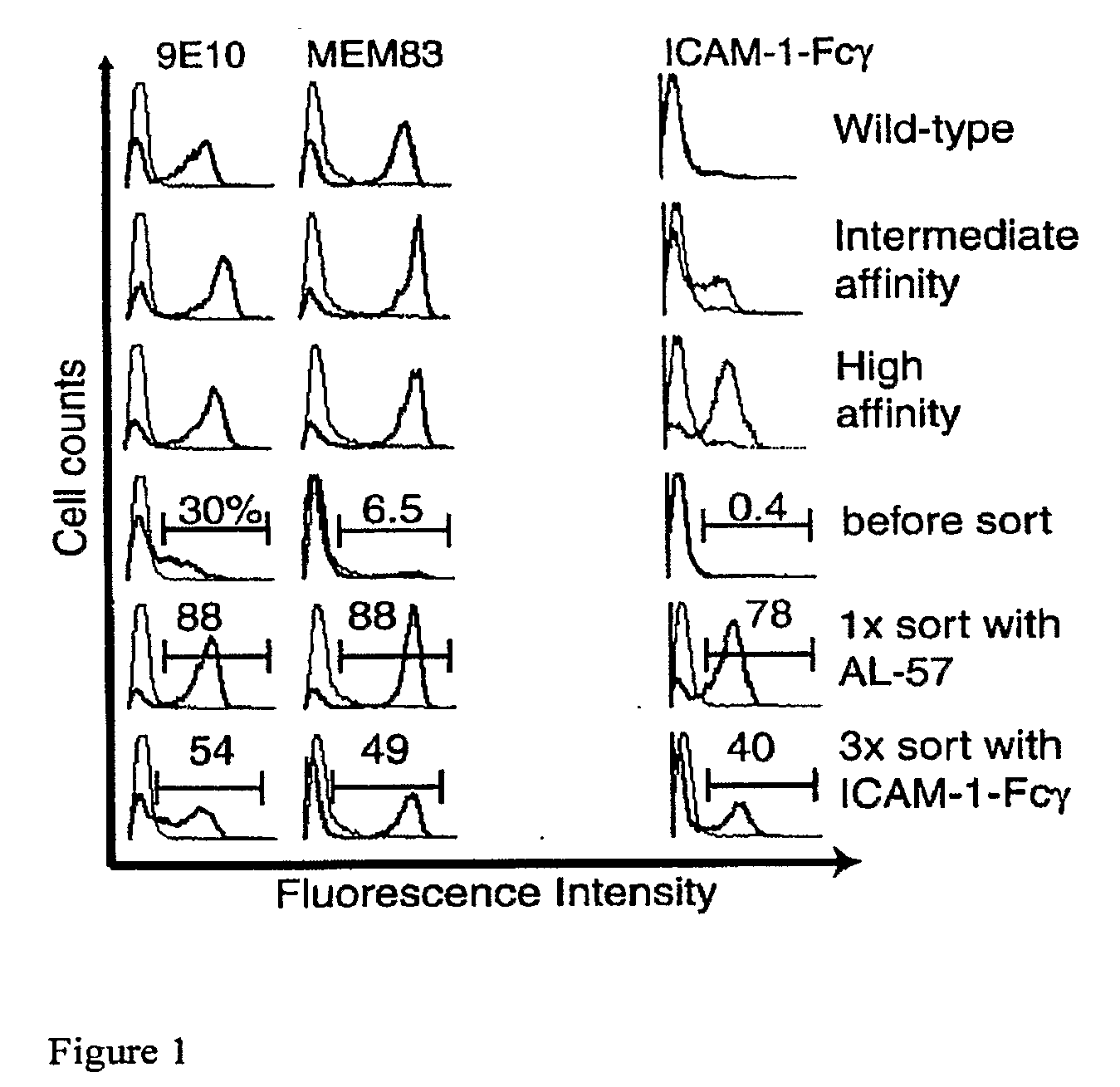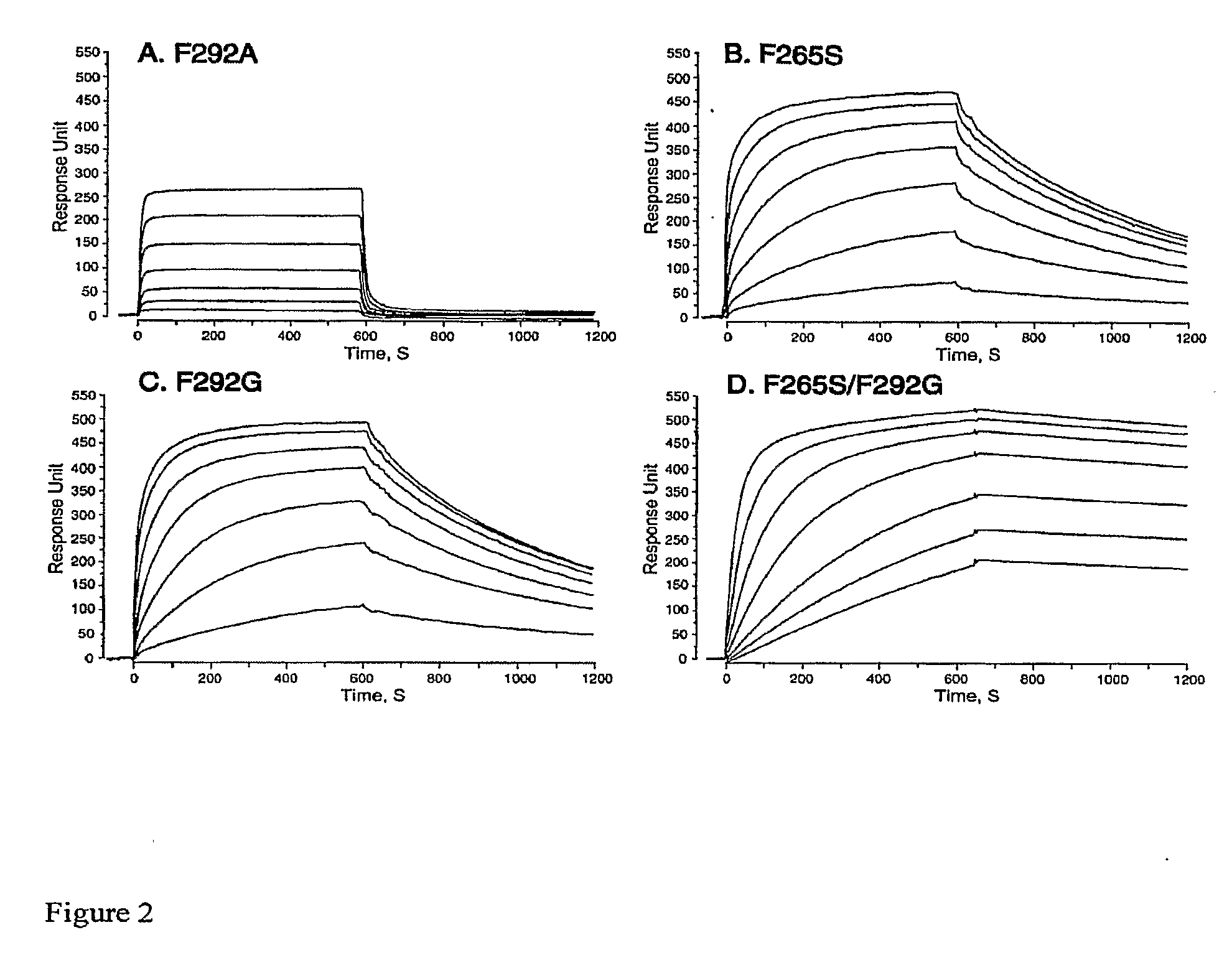Integrin Alpha L I Domain Mutants with Increased Binding Affinity
a technology of integrin and which is applied in the field of integrin alpha l i domain mutants with increased binding affinity, to achieve the effect of higher affinity
- Summary
- Abstract
- Description
- Claims
- Application Information
AI Technical Summary
Benefits of technology
Problems solved by technology
Method used
Image
Examples
example 1
Directed Evolution to Probe Protein Allostery: Integrin I Domains of Unprecedented Affinity
Materials and Methods
[0143]The yeast strain used in this study is EBY10026. The αL I domain cDNA coding for residues Asn-129 to Thr-318 was subcloned into the display plasmid pCTCON31 using NheI and BamHI sites. This results in a fusion protein that contains from N- to C-terminus Aga2, linker, hemagglutinin tag, I domain, and c-myc tag. When expressed, Aga2 is disulfide-bonded to Aga1, which is covalently attached to the cell wall via a phosphatidylinositol glycan tail intermediate31. Previously characterized disulfide-bonded, intermediate affinity (IA; L161C / F299C) and high affinity (HA; K287C / K294C) I domain mutants6 were also cloned into pCTCON. Plasmids were transformed into EBY100 using the EZ-Yeast Transformation Kit (Zymo Research) according to the manufacturer's manual.
Error-Prone and Focused Mutagenesis Libraries
[0144]Error-prone libraries were generated by...
PUM
| Property | Measurement | Unit |
|---|---|---|
| dissociation constant | aaaaa | aaaaa |
| pH | aaaaa | aaaaa |
| time | aaaaa | aaaaa |
Abstract
Description
Claims
Application Information
 Login to View More
Login to View More - R&D
- Intellectual Property
- Life Sciences
- Materials
- Tech Scout
- Unparalleled Data Quality
- Higher Quality Content
- 60% Fewer Hallucinations
Browse by: Latest US Patents, China's latest patents, Technical Efficacy Thesaurus, Application Domain, Technology Topic, Popular Technical Reports.
© 2025 PatSnap. All rights reserved.Legal|Privacy policy|Modern Slavery Act Transparency Statement|Sitemap|About US| Contact US: help@patsnap.com



